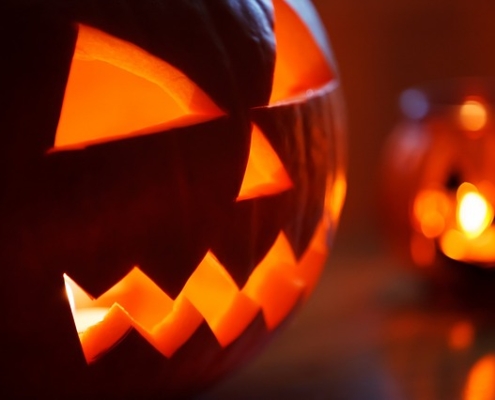The History of the Jack-O-Lantern

photo courtesy of pixabay
by Heather Stone
As the last days of October approach pumpkins carved in an array of faces and lit from within by candles dress porches, stoops, windows and walkways. The jack-o-lantern as we know it is a true American icon of Halloween, but where and how did this tradition begin?
There are several theories on the origin history of the jack-o-lantern. In 17th century Britain, an unknown man or night watchman carrying a lantern was referred to as “Jack of the lantern.”
During the same century in Ireland the “lanterns of Jack” were one of many names to describe the strange phenomenon of lights seen flickering over the peat bogs. These lights are known by many names including the “will o’ the wisps.”

photo courtesy of pixabay
My favorite history of the jack-o-lantern theory is based on an old Irish folktale about a man named Stingy Jack who tricked the Devil. The legend of “Stingy Jack” has many forms. Here is one.
Stingy Jack invited the Devil to have a drink with him, but Stingy Jack didn’t want to pay for his drink, so he convinced the Devil to turn himself into a coin (the Devil being able to take one any form) that Jack could use to buy their drinks. After the Devil turned himself into a coin, Jack decided to keep the money placing it in his pocket. Inside his pocket lay a silver cross preventing the Devil from changing back into his original form. Jack agreed to free the Devil, under the condition that he would not bother Jack for one year. The next year, Jack again tricked the Devil into climbing into a tree to pick a piece of fruit. While he was up in the tree, Jack carved a sign of the cross into the tree’s bark so that the Devil could not come down until the Devil promised Jack not to bother him for ten more years. Eventually, Jack died and legend has it that God would not allow him into heaven and the Devil angry from being tricked didn’t want Jack either. The Devil is said to have sent Jack off into the night with only a burning ember to guide his way. Jack but this ember into a carved out turnip and roams the earth to this day.
In Ireland, folks began carving faces into turnips to ward off Stingy Jack and evil spirits on All Hallow’s Eve. Beets were used in England. This tradition likely came to America with immigrants from these countries. The pumpkin being plentiful here and easy to carve became today’s jack-o-lantern.
Read more about the Queen of Halloween.



Leave a Reply
Want to join the discussion?Feel free to contribute!